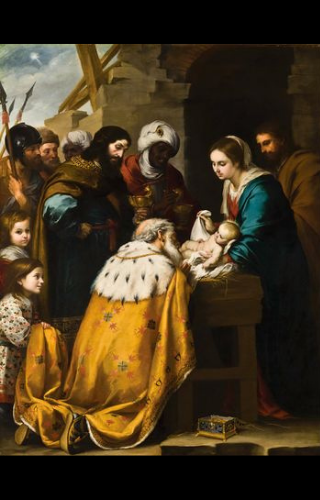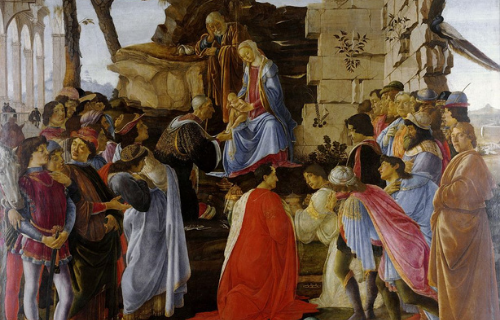Many of the events in the stories of the bible have served as artistic inspiration – the Epiphany is no different. Commonly depictions of the event have been seen in historical paintings, stained glass windows, and tapestries when churches were often one of the main patronage of artists in the communities they served. Below is a small portion of images that run from famous to lesser known – all reflecting the Epiphany.
Epiphany, a Christian holiday on January 6th, celebrates when the Magi (or wise men) visited Bethlehem and Jesus after following the Star of Bethlehem. The story can be found in the Gospel of Matthew and is celebrated in many ways on the 6th around the world – today we celebrate by looking at some truly wonderful pieces of art.
A favorite image that comes to mind is “The Adoration of the Magi” by Bartolome Esteban Murillo. Painted in the 17th century and painted in the Baroque style this image displays wonderful use of colour, light, and shadows. The faces of the figures have such an endearing quality and humanness that urge you to look closer. You will also notice that one of the most charming parts of this painting is that all eyes are on baby Jesus except the one child on the left side, who gazes out at the viewer – almost as if urging you to come closer. Created with oil on canvas this is a wonderful example of how rich and luminous oil paints can be. This painting currently resides in the Toledo Museum of Art in Toledo, Ohio.

Next is the “Adoration of the Magi” by Sandro Botticelli. Created in 1475 or 1476, it was painted with tempera on a panel. Tempera is a permanent and fast drying medium that includes pigments and a water soluble binder such as egg. Over the span of his life, Botticelli was commissioned to paint seven versions of this scene – this particular one was commissioned for a funerary chapel in Santa Maria Novella earlier in Botticelli’s career. Interestingly, he used members of the Medici family as some of the figures in the painting. It is also rumored that Gaspare di Zanobi the man who commissioned the work is found in the painting as the old man with white hair and light blue robe in the mid-ground who looks out at the viewer. Currently this piece lives as a part of the Uffizi Gallery’s collection in Italy.

A more recent visual interpretation of the Epiphany is from 1942, created by a man named Richard Walker who was a British WWII prisoner of war. He had moved from London to teach art at the Raffles Institution in Singapore. While imprisoned he continued to teach art classes, this painting “Epiphany” was a study for a mural and was created in Changi during the war and it was placed behind an improvised alter for services in the prison. The Virgin Mary was depicted as an Asian woman to symbolize the universal truth of Christianity. This piece is striking in its colour choices and seems to exude hope and peace. A sense of warmness and love is cultivated by placement of the figures placed in a circle around the baby Jesus which must have been in stark contrast to Walker’s situation at the time of working on it. Currently the piece lives at the Singapore Art Museum.

